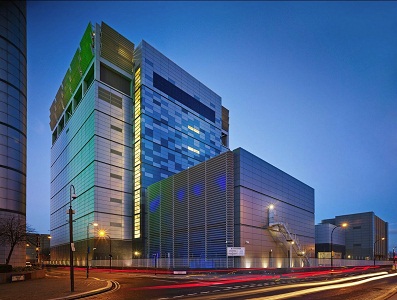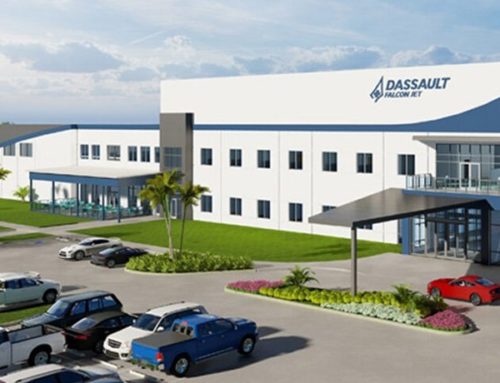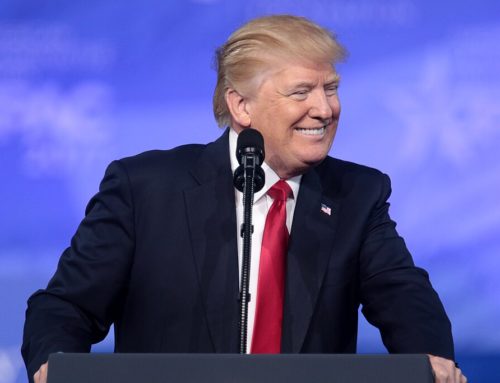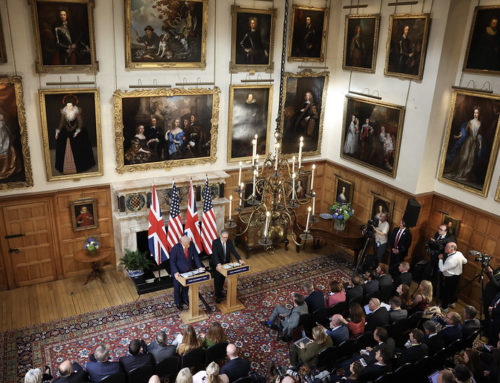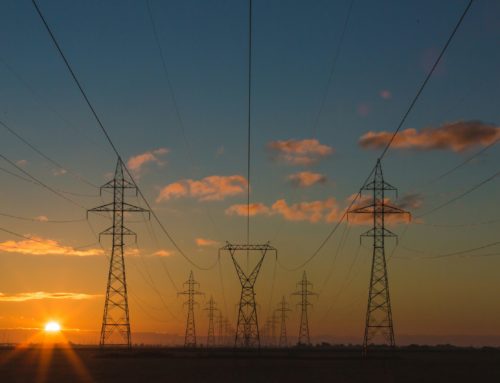1. Telehouse invests $370M in new London data centre
Telehouse International Corporation of Europe, a subsidiary of Japan’s KDDI Corporation, has officially broken ground on its latest data centre project, Telehouse West Two, located at its iconic Docklands campus in East London. Representing a $370 million (£275 million) investment, this new facility marks a significant milestone in Telehouse’s long-term strategy to bolster its presence in the UK and support the growing demand for high-performance, sustainable digital infrastructure.
A Strategic Expansion for the AI Era
Set for completion in 2028, Telehouse West Two is designed to meet the evolving needs of enterprise clients embracing AI, cloud computing, and high-density workloads. The nine-storey building will span 32,000m², including 11,292m² of white space across six levels, and deliver 33MW of power capacity via two new 132kV substations.
The facility will feature air and liquid cooling technologies, enabling customers to scale operations efficiently while maintaining optimal performance. It will also include two meet-me rooms and four secure connectivity risers, reinforcing its role as part of Europe’s most connected data centre hub.
Sustainability at the Core
Telehouse West Two is being built to BREEAM Excellent standards, ensuring top-tier environmental performance. The data centre will be powered entirely by 100% renewable energy, and incorporate heat recovery systems and HVO-fuelled backup generators to reduce emissions. Efficiency metrics such as ultra-low PUE and WUE ratios are central to the design, reflecting Telehouse’s commitment to sustainability.
Empowering Digital Transformation
Kenkichi Honda, Managing Director of Telehouse Europe, emphasized the strategic importance of the project:
“The new Telehouse West Two site marks another important step in our ongoing mission to deliver world-class, sustainable digital infrastructure. This expansion will empower digital transformation for enterprise clients across multiple sectors, enabling them to benefit from emerging technologies which are shaping the future world, while supporting the uncompromising need for energy efficiency and carbon neutrality.”
Construction Partners and Legacy
The project is being delivered by Flynn Management & Construction, in partnership with Jones Engineering Group, specialists in mechanical, electrical, and fire protection systems. Telehouse has maintained a presence in London for over 35 years, and this latest development reinforces its role as a cornerstone of the UK’s digital economy.
2. Trump and Xi to visit South Korea for APEC
In a high-stakes diplomatic engagement, U.S. President Donald Trump and Chinese President Xi Jinping are set to meet in South Korea on October 30, on the sidelines of the Asia-Pacific Economic Cooperation summit in Gyeongju. This marks their first in-person meeting since Trump’s return to office and comes at a critical juncture in global trade and security relations.
The bilateral talks are expected to address a wide array of contentious issues, including the intensifying trade war between the world’s two largest economies, rare earth export controls, fentanyl cooperation, and broader geopolitical tensions involving Taiwan and North Korea.
Trade Tensions at Boiling Point
Recent weeks have seen a sharp escalation in trade hostilities. On October 9, Beijing announced sweeping export restrictions on rare earth elements—materials critical to global tech and defense industries. In response, Trump threatened to impose 100% tariffs on Chinese imports starting November 1, adding to existing duties that already exceed 30%.
The stakes are high. China controls over 70% of global rare earth mining and 90% of processing capacity, giving it significant leverage. The U.S. administration has also floated potential export controls on critical software and aircraft components, signaling a broader decoupling of supply chains.
Strategic Diplomacy in Gyeongju
The APEC summit provides a rare opportunity for both leaders to reset relations. Trump’s Asia tour includes stops in Malaysia and Japan, where he is expected to sign trade deals and participate in peace dialogues. His meeting with Xi in South Korea is being framed as a “high-risk, high-reward” moment, with global markets watching closely for signs of de-escalation.
South Korean President Lee Jae Myung will also host both leaders, aiming to balance Seoul’s strategic alignment with Washington while stabilizing ties with Beijing. Discussions may touch on inter-Korean peace efforts, China’s influence over Pyongyang, and lingering disputes over maritime boundaries and cultural exports.
Beyond Trade: Security and Global Influence
While trade dominates the agenda, security concerns loom large. North Korea’s recent missile launches have reignited tensions on the peninsula, and Trump has hinted at a possible meeting with Kim Jong Un during his visit. Additionally, Trump is expected to press Xi on curbing Chinese purchases of Russian oil, linking trade negotiations to broader geopolitical goals including the war in Ukraine.
Outlook: Deal or Deadlock?
Despite the optimism expressed by both sides, analysts caution against expecting a breakthrough. The Trump-Xi meeting may serve more as a symbolic gesture than a substantive resolution. Still, any progress could help stabilize markets and set the tone for future negotiations.
As the APEC summit unfolds, Trade Horizons will continue to monitor developments and provide insights into how these talks may reshape global trade dynamics.
3. Nebraska Governor Jim Pillen to lead strategic trade mission to Israel

taylor brandon via unsplash
Nebraska Governor Jim Pillen is set to lead a high-level trade delegation to Israel from October 27 to 30, aiming to deepen economic, technological, and cultural ties between the Cornhusker State and one of the Middle East’s most dynamic innovation hubs.
The delegation includes representatives from the Nebraska Department of Economic Development, the Jewish Federation of Omaha, and leaders from the state’s agricultural equipment manufacturing, food production, and professional services sectors.
Beef, AgTech, and Diplomacy at the Forefront
A key focus of the mission is the promotion of Nebraska-made kosher beef, a product that dominates U.S. exports to Israel. In 2024, Nebraska exported $13.5 million worth of beef to Israel, and that figure has already surged by 27% in the first half of 2025 compared to the same period last year.
Governor Pillen and his team will also work to strengthen partnerships in agricultural technology (ag tech) — a sector where Nebraska and Israel have already seen fruitful collaboration. Notable examples include:
- Lindsay Corporation’s partnership with Israeli firm Taranis on Smart Pivot irrigation systems.
- Reinke’s collaboration with CropX Technologies to develop advanced crop water monitoring tools.
- Valmont’s acquisition of Prospera Technologies, an Israeli AI company focused on precision agriculture.
- Greeneye Technology, an Israeli startup using AI for weed and pest control, now partnering with Nebraska-based Boeck Seed Services.
Diplomatic and Cultural Engagements
Beyond trade, the mission will include diplomatic meetings where Governor Pillen will discuss the role of U.S. defense technologies in supporting Israel’s security. The delegation will also visit humanitarian projects in Israel that are supported by Nebraskan organizations.
Cultural and academic ties are also on the agenda. Nebraska’s Jewish community and universities have long fostered exchange programs and academic initiatives focused on Jewish civilization and Israeli society.
A Vision for Global Collaboration
Governor Pillen’s mission underscores Nebraska’s commitment to global engagement, particularly in sectors where the state has a competitive edge — agriculture, food production, and innovation. As geopolitical and economic landscapes shift, such missions are vital for building resilient, mutually beneficial partnerships.
4. UK India manufacturing trade mission
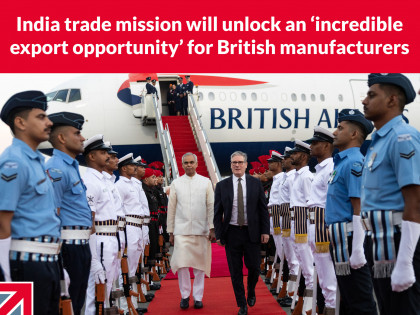
The UK’s largest-ever trade mission to India marks a pivotal moment for British manufacturers seeking to expand into one of the world’s fastest-growing economies. With the free trade agreement signed in July 2025, the stage is set for a new era of bilateral trade, innovation, and industrial collaboration.
A Strategic Gateway to Growth
ndia’s manufacturing sector, contributing 17% to its GDP and projected to grow to 21% within the next six years, presents a fertile landscape for UK exporters. The trade mission, which includes over 125 CEOs, entrepreneurs, and academic leaders, is designed to catalyse partnerships in advanced engineering, digital manufacturing, sustainable technologies, and Industry 4.0.
British manufacturers now benefit from duty-free access for 99% of UK-bound Indian goods, while tariffs on UK exports—such as automotive components, machinery, and high-value consumer goods—are being significantly reduced. This opens up unprecedented opportunities for companies of all sizes to enter or scale in the Indian market.
Mission Highlights: Innovation Meets Opportunity
The October 2025 trade mission itinerary includes curated B2B matchmaking sessions, facility visits, and participation in the Advanced Engineering Show at NEC Birmingham, where Indian delegates will engage with UK innovators in smart factories, robotics, and circular economy solutions.
Key focus areas include:
- High-performance materials: Graphene, composites, and nanotech
- Green manufacturing: Decarbonisation and remanufacturing
- Smart factories: IoT, AI, and additive manufacturing
- Resilient supply chains: Economic security and digital traceability
These sectors align with India’s push for sustainable industrialisation and its ambition to become a $35 trillion economy by 2047.
Export Potential: From Niche to Scale
British SMEs and mid-sized manufacturers stand to gain the most. The CETA agreement is expected to increase UK exports to India by nearly 60%, adding £4.8 billion to GDP annually and creating thousands of jobs across the UK. Companies like Graphcore, Tide, and Revolut have already announced multi-billion-pound investments in India’s AI and fintech sectors, signalling confidence in the new trade framework.
Moreover, the mission supports spin-out opportunities from Net Zero technologies, enabling UK firms to export not just products but also intellectual capital and sustainable solutions.
Building Long-Term Partnerships
Beyond trade, the mission fosters collaborative R&D, talent mobility, and digital innovation. Simplified visa pathways and joint initiatives in education and tech are part of the broader Vision 2035 strategy, reinforcing the UK–India partnership as one built on shared democratic values and mutual economic ambition.
Final Thoughts
For British manufacturers, this trade mission is more than a diplomatic gesture—it’s a launchpad for global competitiveness. As India accelerates its industrial transformation, UK businesses have a rare chance to co-create the future of manufacturing, export innovation, and build enduring commercial ties.
5. Georgia–Serbia trade agreement talks underway

Tbilisi and Belgrade — Georgia and Serbia have announced plans to initiate formal negotiations on a bilateral free trade agreement, marking a significant step toward deepening economic ties between the two Eastern European nations.
The announcement came following a high-level meeting between Georgian Prime Minister Irakli Kobakhidze and Serbian President Aleksandar Vučić, held in Belgrade earlier this week. Both leaders expressed optimism about the potential for enhanced trade flows, investment cooperation, and regional connectivity.
“This agreement will open new horizons for our businesses and strengthen our strategic partnership,” Prime Minister Kobakhidze said. “Georgia is committed to building bridges across the region, and Serbia is a key partner in that vision.”
President Vučić echoed the sentiment, highlighting the importance of diversifying Serbia’s trade relationships. “We see Georgia as a dynamic economy with growing potential. A free trade agreement will benefit both our countries, especially in sectors like agriculture, manufacturing, and digital services.”
Strategic Timing
The talks come amid broader efforts by both countries to expand their economic footprints beyond traditional markets. Georgia, a key player in the South Caucasus, has been actively pursuing trade liberalisation with partners across Europe and Asia. Serbia, meanwhile, continues to balance its EU accession ambitions with regional cooperation initiatives.
Analysts suggest the agreement could serve as a model for other non-EU countries seeking closer economic integration without formal membership.
What’s at Stake
Trade between Georgia and Serbia remains modest but has shown steady growth in recent years. According to government data, bilateral trade volumes reached approximately €45 million in 2024, with machinery, pharmaceuticals, and food products among the top exchanged goods.
Negotiators are expected to focus on reducing tariffs, simplifying customs procedures, and establishing mechanisms for dispute resolution. The first round of talks is scheduled to begin in early November, with both sides aiming to conclude the agreement by mid-2026.
Regional Implications
The move has been welcomed by regional business groups and international observers, who see it as a sign of increasing economic pragmatism in Eastern Europe.
“This is a smart and forward-looking initiative,” said Ana Marković, a trade policy expert based in Zagreb. “It reflects a growing recognition that regional cooperation can deliver tangible benefits, even outside the EU framework.”
As negotiations begin, stakeholders in both countries will be watching closely to see how the agreement unfolds—and what it might mean for the future of trade in the region.

